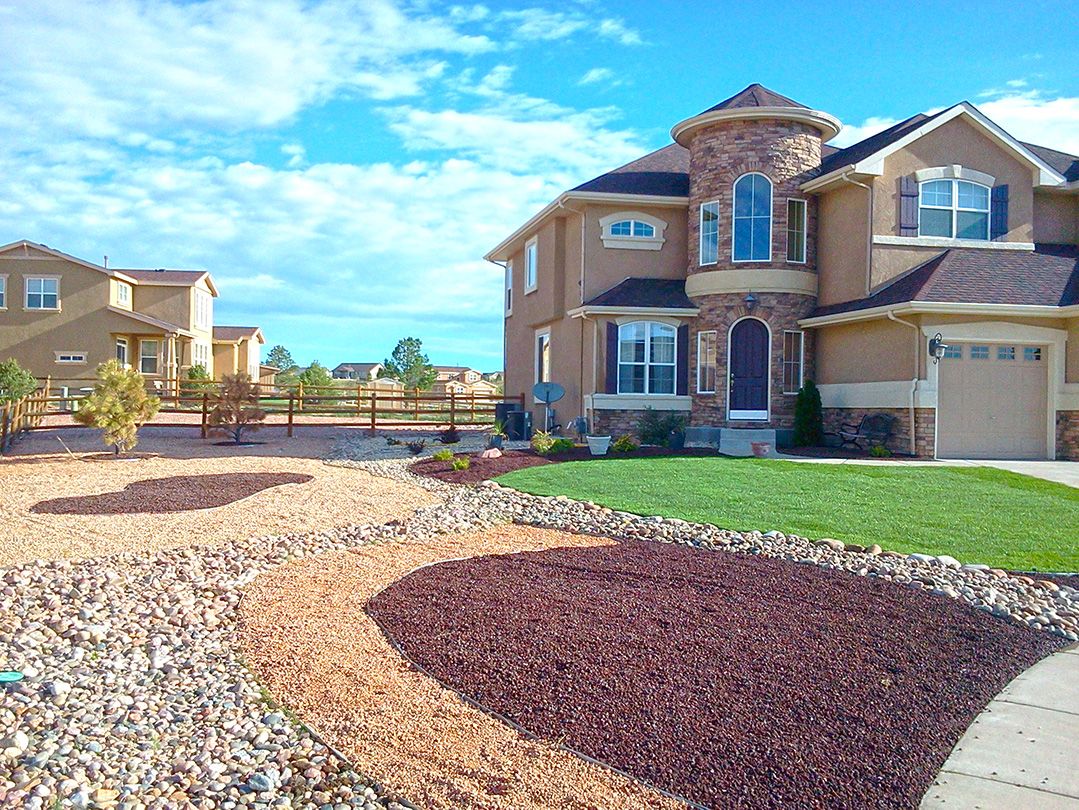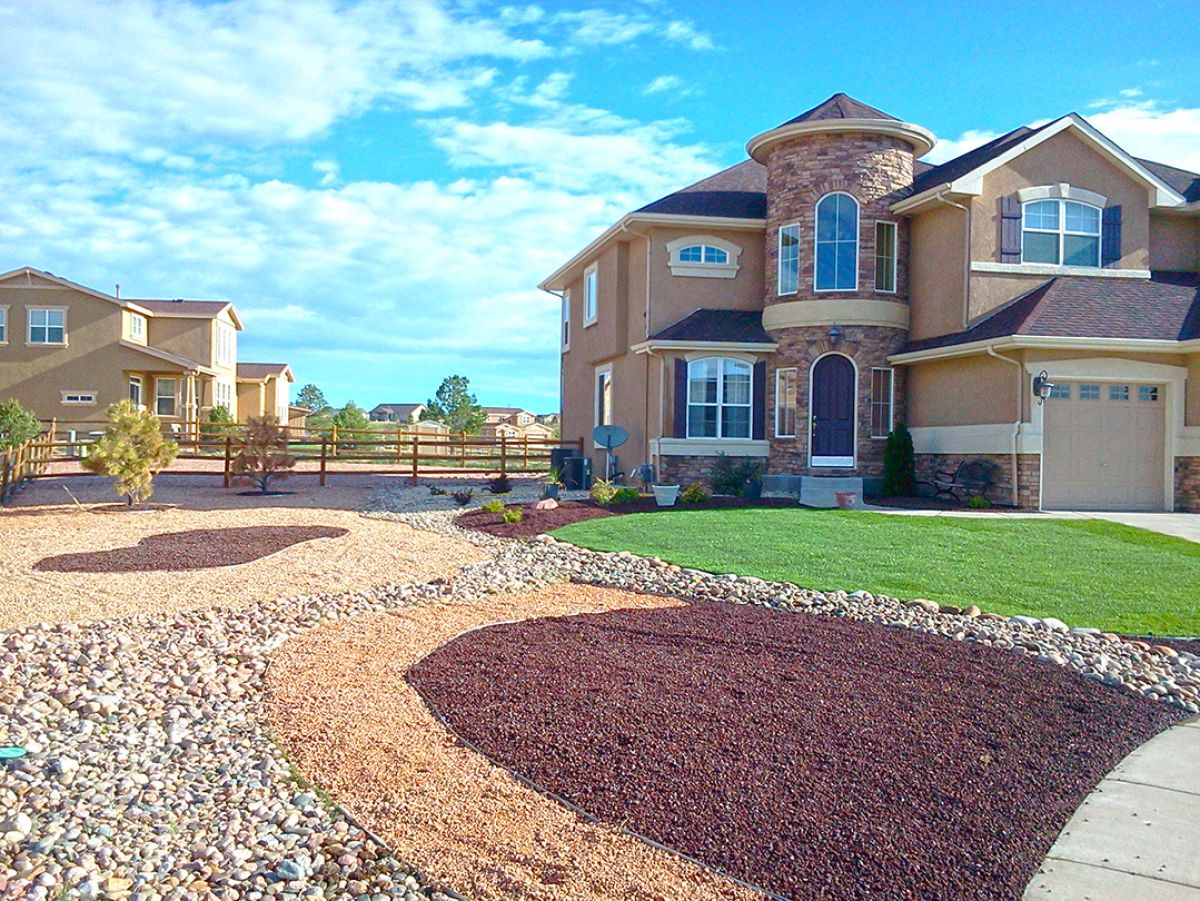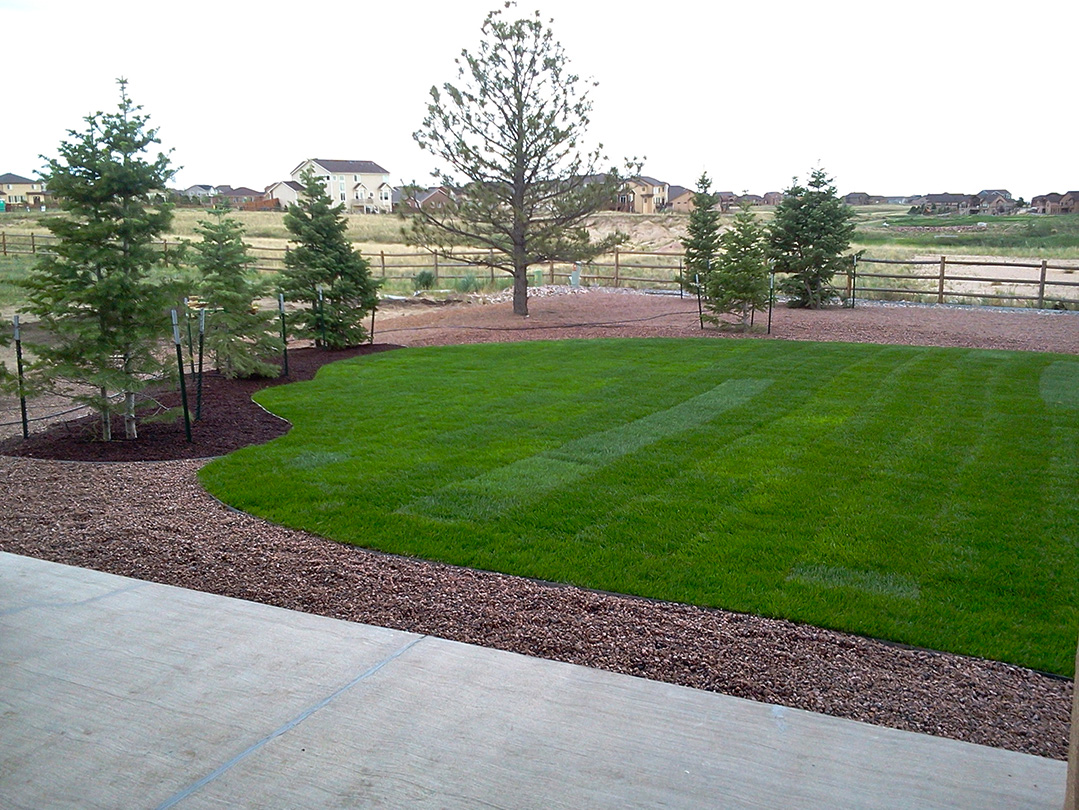
Xeriscape Landscaping in Colorado Springs: A Guide to Water Conservation

Forget the cactus. Conserve water while maintaining a beautiful yard.
Traditionally, many people associate xeriscape landscaping with desert climates. A pile of rocks in a front yard in Phoenix, or some pavers and tall grasses in California. Interestingly, the word and idea of xeriscaping was actually coined by Denver Water in the 1980s. Colorado ranges from an arid to semi-arid climate, and water is one of our most precious natural resources. Xeriscape landscaping simply helps us conserve and use water efficiently and effectively.
Xeriscape Does Not Mean Zero-scape
First, it’s important to note that xeriscaping does not mean having a dirt or gravel yard. Xeriscape is all about utilizing plants native to the region – the stuff that grows naturally along our hiking trails or meadows – along with integrating irrigation zones. Instead of having grass spread out like carpet from property line to property line, introduce pockets of grass only in the most desirable and useful areas. Xeriscape can combine elements of traditional lawns, but with proper planning, does it in a way that bests conserves water.

Plan and Design Before You Begin
It’s important to recognize the natural inclination of your lot and land before you begin. What are the common watering restrictions in your area? Colorado Springs generally undergoes watering restrictions each summer – don’t plant things that won’t survive a dry, hot summer. What elevation does your house sit at? This will determine which plants and trees flourish the best. Examine your soil conditions. Some soils are intrinsically better at retaining moisture while others naturally allow it pass through. Consider the hardscaped (paved / concrete) areas of your home. Well-designed hardscaped areas can redirect natural rain and snowfall to other areas of your yard. Permeable hardscaped areas also capture rainfall instead of allowing it to flow into the street.
Research and Choose Plants Wisely
Colorado Springs Utilities has created a website devoted to xeriscaping properly. Within this site, they have compiled a database of plants and rank them according to their water usage and ability to flourish in Colorado Springs. This is a fast and useful way to discover plants that will both fare well in our climate and be aesthetically pleasing for your yard. Grass is also important to many people and doesn’t have to be eliminated from xeriscaping. Consider smaller irrigation zones with grasses that require much less watering, such as buffalo or blue grama grass.

Improve Your Soil
Within your irrigation zones, improve the soil so that it better holds moisture. Use mulch in areas with plants and bushes to retain moisture, and use river rock to allow rain runoff to move to other areas of your yard. This can include bringing in topsoil or incorporating compost. Not only will appropriate soil retain moisture, but adding compost can provide nutrients for plants. Be aware, not all native plants like the added moisture and organic matter – they’re not used to these elements in their natural conditions. Refer to planting guides and local professionals before devoting serious time, money, and energy.
Water Efficiently
Sprinkling systems and drip lines attached to automatic watering schedules is an efficient way to add supplemental water to your yard. Professionally designed irrigation systems will keep watering to a minimum, while also utilizing natural elements to retain moisture and reroute runoff. Be sure to follow watering restrictions in your area and only plant what will survive under these conditions.

Maintain Your Xeriscape
Xeriscape usually requires much less maintenance than traditional yards. However, it’s extremely important that you do keep up on its care as needed. This includes seasonal fertilizing, pruning, weeding, and aeration. It’s also important to refresh mulch yearly and river rock every few years. To refresh your yard and keep it looking pristine, don’t overlook yearly power washing of rocks and hardscapes.
Conclusion
Xeriscaping is not only a responsible way to landscape, but it can also retain functional play and gathering areas, as well as providing beauty and coziness. Xeriscaping doesn’t mean skimping on plants and flower beds, but intelligently incorporating plants that flourish naturally in our habitat. If you’d like to learn more and begin landscaping your yard – give us a call and one of our Project Managers would be happy to guide you down the path.


